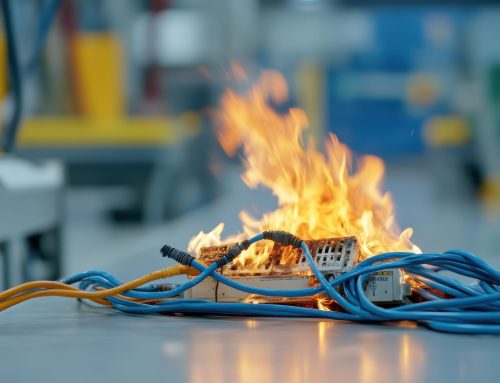1. FACP (Fire Alarm Control Panel)
A Fire Alarm Control Panel (FACP) is a centralized device used to control the entire fire alarm system. Different fire alarms are divided into zones and some FACPs can even tell you the exact location of a fire.
4 types of FACPS:
- coded
- conventional
- addressable
- multiplex
2. Wet Pipe vs. Dry Pipe Sprinkler Systems
What is the difference between wet pipe and dry pipe sprinkler systems?
A wet pipe sprinkler systems is an active fire protection method, consisting of a water supply system, providing adequate pressure and flowrate to a water distribution piping system, onto which fire sprinklers are connected.
Dry pipe sprinkler systems are the second most common sprinkler system type. Dry pipe systems are installed in spaces in which the ambient temperature may be cold enough to freeze the water in a wet pipe system, rendering the system inoperable. Dry pipe systems are most often used in unheated buildings, in parking garages, in outside canopies attached to heated buildings
3. Clean Agents
Clean agents are inert gases and chemical agents used to extinguish fires that don’t leave behind any residue upon evaporation. They extinguish the fire by interrupting the chemical reaction and/or removing heat from the fire triangle. Another advantage is that they’re non-ozone depleting
Examples of Clean Agents
FM-200, FE-13, Novec 1230, and Argonite
Common Applications
- Server rooms
- Telecommunication facilities
- Control rooms
- Libraries
- Museums
4. NFPA Standards
NFPA standards are safety guidelines and recommendations created by the National Fire Protection Association to help local and national safety agencies prevent fires and prevent loss of property and lives. All NFPA standards are revised and updated every three to five years, in revision cycles that begin twice each year. Normally a standard’s cycle takes approximately two years to complete. Over 300 codes and standards exist.
Common NFPA Standards
NFPA 10 – Portable Fire Extinguishers
NFPA 13 – Installation of Sprinkler Systems
NFPA 25 – Inspection of Sprinkler Systems
NFPA 72 – Inspection of Fire Alarm Systems
NFPA 101 – Life Safety Code
5. Backflow Preventer
“Backflow” is the unwanted reversal of flow of a liquid, gas, or suspended solid into the potable water supply. Hence a backflow preventer is a device used to protect potable water supplies from contamination or pollution due to backflow.
A backflow preventer is installed where the water main is routed.
2 Ways Backflow Can Occur:
1. Back Pressure: When the pressure in the downstream piping rises above the supply pressure of the system.
2. Back Siphonage: The reversal of water flow due to a drop in the water pressure on the supply side.
Fire Systems, Inc. inspects, installs, and maintains all of the systems mentioned in this article. If you would like to learn more about how we can help with your fire protection needs, Schedule a Service or call us at 770-333-7979






